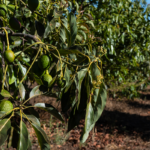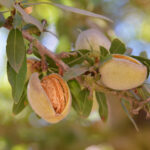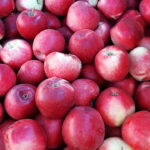Avocado production: Water footprint and socio-economic implications

The content of this article 'Avocado production: Water footprint and socio-economic implications' was prepared by Ruben Sommaruga and Honor May Eldridge and has been revised and republished by FreshFruitPortal.com.
The market for avocados is among the fastest expanding markets worldwide, and consumption, particularly in North America and Europe, has increased during recent decades due largely to a combination of socio-economic and marketing factors.
Avocado production, however, is associated with significant water conflicts, stresses and hot spots, as well as with other negative environmental and socio-economic impacts on local communities in the main production zones.
In considering near-future climatic change in tropical and subtropical areas where avocados are produced, an urgent road map is needed to avoid and mitigate negative effects of avocado production.
Avocado prodcution
This increase has been particularly strong since 1990 among the six largest producers in 2018 shown in Figure 1.
In Europe, the main producer – and only exporting country – is Spain (89.6 kt in 2018), followed by France (2.5 kt) and Greece (1.6 kt).
Given that this production is not enough to satisfy the European market demand, the EU imposes a tariff on imported avocados (as well as on other fruits) of 5.1 per cent in order to protect the fledgling European avocado industry.

Figure 1. Development of global avocado production (upper panel) and for the six most important producers (lower panel) between 1961 and 2018.
However, in April 2020, the EU signed an updated free trade agreement with Mexico, which will mean that Mexican avocados imported into the EU will be tariff-free.
By reducing trade friction and improving trade links, this agreement will increase the share of Mexican avocados being sold to the EU market.
Avocado water footprint
Production of avocado takes place in typically subtropical, tropical and Mediterranean climates where water consumption, in general, is high and where trees of this species cannot usually be grown at commercial scale without supplementary irrigation.
Freshwater resources are increasingly over-exploited in many parts of the world with direct negative consequences for food production and humankind (Falkenmart, 2013).
In a world where irrigated agriculture accounts for around 70 per cent of the water use worldwide (OECD, 2017), assessing potential imbalances between production and water use is essential to identify areas at risk around the world and to assure sustainability, as well as addressing social issues.
To assess the impact of avocado production on water resources, we first calculated the average green (rainwater) plus blue (surface and groundwater) water footprint of this fruit (Mekonnen and Hoekstra, 2010) for each of the producer countries.
The database available for the period 1996–2005 shows that the world average green water footprint for avocado is 849 m3 t–1 (cubic metres of water consumption per tonne), ranging from 31 m3 t–1 in Saint Lucia in the Caribbean to 4,494 m3 t–1 in the region of Beja, Portugal where according to FAOSTAT recorded production took place only between 1990–1994.
The blue water footprint on average is 237 m3 t–1, but ranges from 0 m3 t–1 in Grenada and some regions of Guatemala to 2,295 m3 t–1 in the region of Antofagasta, followed by Tarapacá (2,196 m3 t–1) in Chile.
For comparison, the world average green and blue water footprint estimated for all fruits is 727 m3 t–1 and 147 m3 t–1, respectively (Mekonnen and Hoekstra, 2010).
We then multiplied the average water footprint for each of the top avocado producer countries by their respective avocado production in 2018 (Figure 2).
In some countries there are large differences in the water footprint among regions, for example, in countries extending over different climatic zones such as Chile.
However, for the sake of simplicity and because for most countries detailed production per region is not available, we used the average for each country.
Further, for this estimation, we also conservatively assumed that the water footprint has remained constant over time and we did not include the grey water footprint, which is the volume of freshwater required to assimilate pollutants to meet a specific water quality standard.
Globally, around 6.96 km3 of water is used or the equivalent of around 2.82 million Olympic size swimming pools (assuming a volume of 2500 m3 each) for avocado production in 2018.

Figure 2. Total water footprint (sum of blue and green) corresponding to the annual production of avocado in 2018 for the nine top avocado producers (ordered by its production)
Interestingly, Chile (ranked 9 in production) ties with Brazil in its overall water footprint (Figure 2), although Brazil has almost double the level of Chile's production.
The blue water footprint from agricultural production in Chile is mainly concentrated in the northern dry Pacific and Central areas where less water is available (Donoso et al., 2015).
Production fell by 46 per cent in 2018 compared with its maximum in 2009, suggesting the existence of water stress.
Socio-economic impacts
In Mexico where avocados are considered as ‘green gold’ and production takes place over the whole year, around 160 kha are dedicated to its production with most of the plantations being concentrated in the state of Michoacán, which accounted for around 80 per cent of the total production in 2017.
In this region, the area dedicated to the production of avocados has increased in 36 years by around seven-fold.
Not surprisingly, a significant area of native forest has been converted into avocado fields and further, the increase in illegal avocado farming has caused increasing and uncontrolled deforestation in Mexico.
Subsistence crops have been pushed on to more marginal land (some of which was previously forested) to expand avocado plantations.
This marginal land tends to be less fertile and therefore less productive, leading to food insecurity in the local region.
Nevertheless, avocado production (specifically the Haas variety) is increasingly seen as a lucrative and attractive industry in Michoacán and this activity has brought increased wealth to the region.
More than 40,000 permanent jobs are associated with avocado production in Michoacán with an additional 60,000 seasonal jobs (Echánove, 2008).
Wages in the avocado plantations of Michoacán are considerably higher than for other low-skilled jobs in the region.
Mexican avocado production is dominated by larger agribusinesses with 60 per cent of Mexican avocado exporting farmers classified as medium and large producers and many of the smaller farms have been bought out by larger enterprises looking to expand (Echánove, 2008).
Towards sustainable production
Achieving more sustainable production methods with lower water use is crucial considering that water supplies, for example, from glacier melt waters will decrease soon in many regions of the world especially in the subtropical and tropical zones, where cultivation of avocados is widespread.
Further, global groundwater resources have been rapidly depleted in semi-humid and arid areas (Wada et al., 2010), while in many regions of the world where avocados are grown, for example the Mediterranean region and California, drier conditions and water stress are on the increase due to climate change (Iglesias and Garrote, 2015; Prein et al., 2016).
Although crop production regulates itself when a resource such as water is limiting, for example, during extended drought periods, the impact on the environment and humans takes place before its use crosses critical boundaries.
This is because overuse of water for irrigation in agriculture restricts the availability of this resource for human consumption and other ecosystem services.
Current avocado production has a significant impact on water access for local communities and is thus generating water stress.
Road map to sustainability
A road map needs to bring together authorities and policymakers, large and small producers, as well as communities from areas with present and future water scarcity to develop a strategic action plan.
They should assess, well in advance, the critical capacity of production of water-intensive agricultural crops in general and of avocado in particular, as depicted by the OECD (2017).
This road map also needs to consider near-future climate change scenarios and the complexities in evaluating agricultural water demand to sustain nutritionally adequate human diets.
The reality of creating such a road map to address water stress from agricultural production is particularly challenging in countries with currently difficult political situations.
However, this is where governments in the richer avocado importing countries can act to facilitate and support such a strategic action plan.
For example, the EU–Mexico trade agreement is a good initiative and potential framework that also includes objectives on sustainable development, environmental standards and working conditions.
We also emphasise that large companies with higher capacity to respond to water stress conditions should not endanger small farmers.
Large agribusinesses need to have greater responsibility for the downstream impact of their water extraction.
In addition, the EU and other large importers need to consider the environmental footprint of avocados when deciding from where to import.
We think the need for a road map is crucial not only because the global economic market for avocados continues to expand, but also because the area dedicated to its cultivation has increased from 66.7 kha in 1980 to 231.5 kha in 2018.
The environmental and socio-economic issues related to avocado production should be carefully monitored.
This would include new areas of production such as in Africa where Kenya nearly reached the levels of Brazil in 2018 and in China where production increased seven-fold between 1992 and 2018.
Areas of avocado production with current and future severe water risk include Mexico, Chile, Peru, United States, Israel and Spain (OECD, 2017).
This type of agriculture is associated with high water usage due to a heavy reliance on irrigation systems and management practices that degrade soil quality and thus, its water-holding capacity.
Furthermore, monoculture production causes other environmental impacts due to the excess use of inorganic fertilisers and pesticides.
Therefore, producing organic avocados in Spain, Peru and California, for example, needs to be considered, since water quality deterioration is considerably lower than in conventional agriculture.
These problems call for urgent counter measures by governments in both avocado producing and importing countries.
We would argue also that it would be beneficial for consumers to get involved through buying sustainably produced avocados.
Source: Wiley Online Library














































